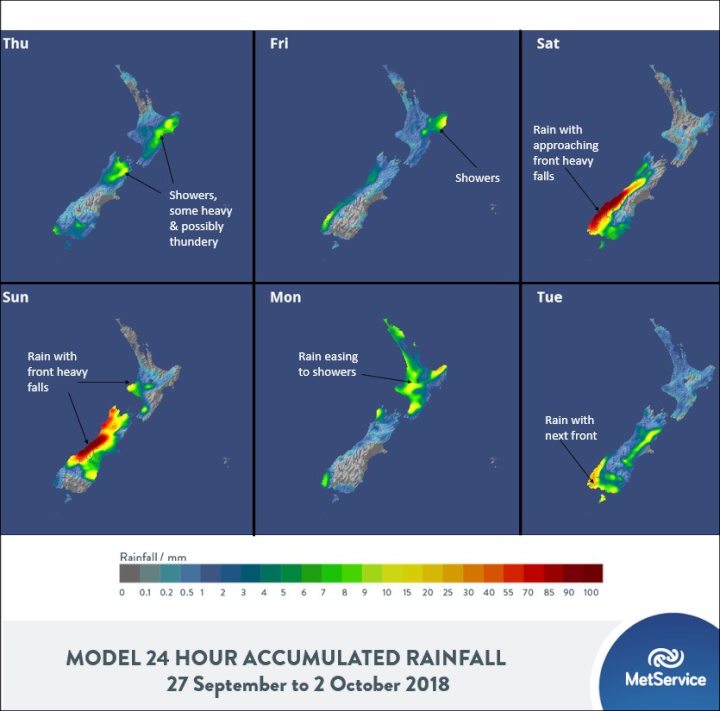A welcome ridge gives way to an active front
A welcome ridge gives way to an active front
MetService is forecasting a ridge of high pressure to bring settled weather to much of the country this weekend, in time for school holidays and the start of Daylight Saving.
Meteorologist Andy Best says: “A ridge of high pressure builds from the Tasman Sea over the country on Friday. It moves northeast over the North Island on Saturdaydelivering mostly fine weather, apart from the chance of isolated afternoon showers over the central North Island, and the chance of afternoon and evening thunderstorms about the ranges of Eastern Bay of Plenty, Gisborne and Hawkes Bay.
“However, most traditional holiday spots from Bay of Plenty and Coromadel Peninsula north should have settled weather during Saturday and Sunday.
“A front approaches the lower South Island on Saturday and brings strengthening northwest winds accompanied by rain about and west of the South Island ranges. Heavy falls are expected on Saturday south of about Hokitika with possible heavy falls on Sunday, spreading to Buller and the northwest ranges of Nelson.
“People are advised to monitor the Watches and Warnings section of themetservice.com website at http://bit.ly/AllWarnings. On Monday the rain eases to showers over the North Island with the showers becoming few and far between over the South Island,” he concludes.
MetService forecasters are also monitoring a tropical cyclone which formed overnight near the southern Solomon Islands, and was named this morning by Fiji Meteorological Service as Tropical Cyclone Liua. This is a rare, out of season cyclone and is the earliest named system since the naming of tropical cyclones began. Currently, warning responsibility for TC Liua rests with RSMC Nadi, but over the next couple of days the TC is forecast to curve to the west and move into the Brisbane area of responsibility over the Coral Sea. You can get updates on the TC track from http://www.met.gov.fj
For more information on the monitoring of tropical cyclones head to http://bit.ly/TropicalCycloneInfo and read up on how cyclones are named herehttps://blog.metservice.com/tropical-cyclone-names.



 Gordon Campbell: On What’s Wrong With The Treaty Principles Bill
Gordon Campbell: On What’s Wrong With The Treaty Principles Bill Watercare Services: No Cause For Concern After Slightly Elevated Levels Of Arsenic Detected In Treated Waikato River Water
Watercare Services: No Cause For Concern After Slightly Elevated Levels Of Arsenic Detected In Treated Waikato River Water Te Pāti Māori: Government’s First Year A ‘Catastrophe For Māori’
Te Pāti Māori: Government’s First Year A ‘Catastrophe For Māori’ Department Of Internal Affairs: Samoan Citizenship Bill Passes Into Law
Department Of Internal Affairs: Samoan Citizenship Bill Passes Into Law NZ National Party: National Acknowledges The Passing Of Hon Nikki Kaye
NZ National Party: National Acknowledges The Passing Of Hon Nikki Kaye Mana Mokopuna: Children And Young People Share Vital Insights On Healing From Family Violence And Sexual Violence In New Report
Mana Mokopuna: Children And Young People Share Vital Insights On Healing From Family Violence And Sexual Violence In New Report NZ Government: PM Marks One Year In Government
NZ Government: PM Marks One Year In Government


